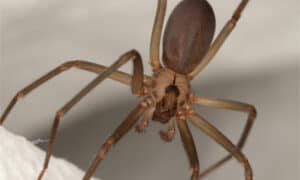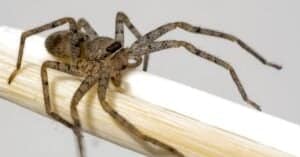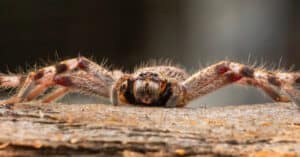Described as strong and agile hunters, wolf spiders are one of the most appreciated classifications of spiders for their exciting ways of capturing prey and unique features no other spider has. Wolf spiders are not literally wolves, of course, but they do not spin webs to trap and instead hunt their prey down, just like the animal they are named after. They also have excellent eyesight, making them track their prey at a distance, and are feared for their hostility towards prey.
There are over 2,200 species of wolf spiders worldwide, but there is only one that stands out as the largest and most terrifying of them all—and that’s what we are going to talk about today. Read on to learn about the wolf spiders of North Carolina and everything you need to know about them.
What are wolf spiders in North Carolina?
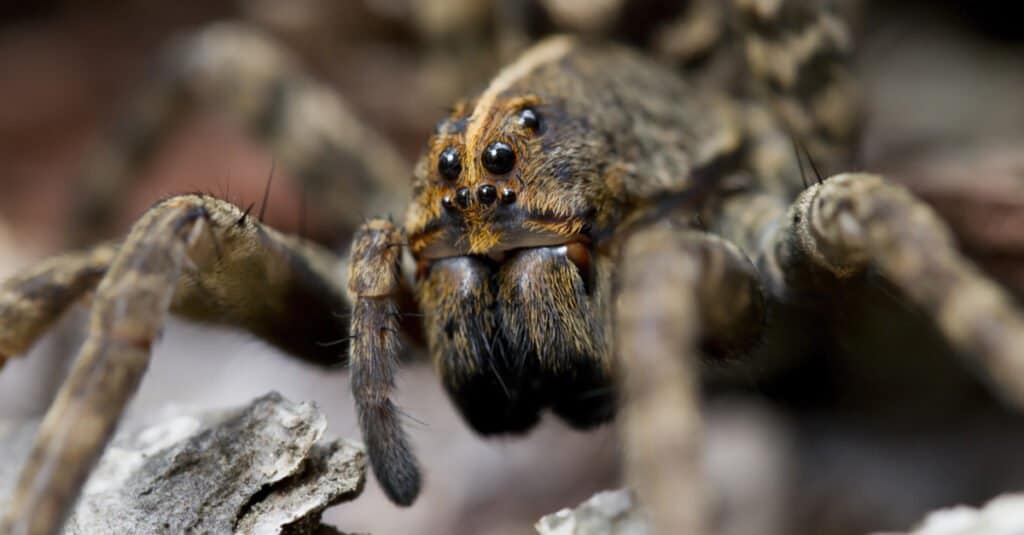
One of the most prominent wolf spiders in North Carolina is the Hogna carolinensis, commonly known as the Carolina Wolf Spider.
©Will E. Davis/Shutterstock.com
One of the most prominent wolf spiders in North Carolina is Hogna carolinensis, commonly known as the Carolina Wolf Spider, which is not the usual wolf spider you can read about. Among many wolf spider species, the Carolina wolf spider is heavy-bodied and considered the largest in North America and the largest of all wolf spider species. This is the only species of spider that is named after a state. It is the official spider of South Carolina, even though it lives in both North and South Carolina.
How big do Carolina wolf spiders get?
Usually, the sizes of wolf spiders range from 1 to 30 millimeters, or 0.04 to 1.2 inches, but the Carolina wolf spider is more significant than that. These giant wolf spiders can grow up to 1.5 inches in length and 12 inches across. Females are more extensive than male wolf spiders, and they can sometimes be mistaken for tarantulas as they can become big and hairy.
Are Carolina wolf spiders poisonous?
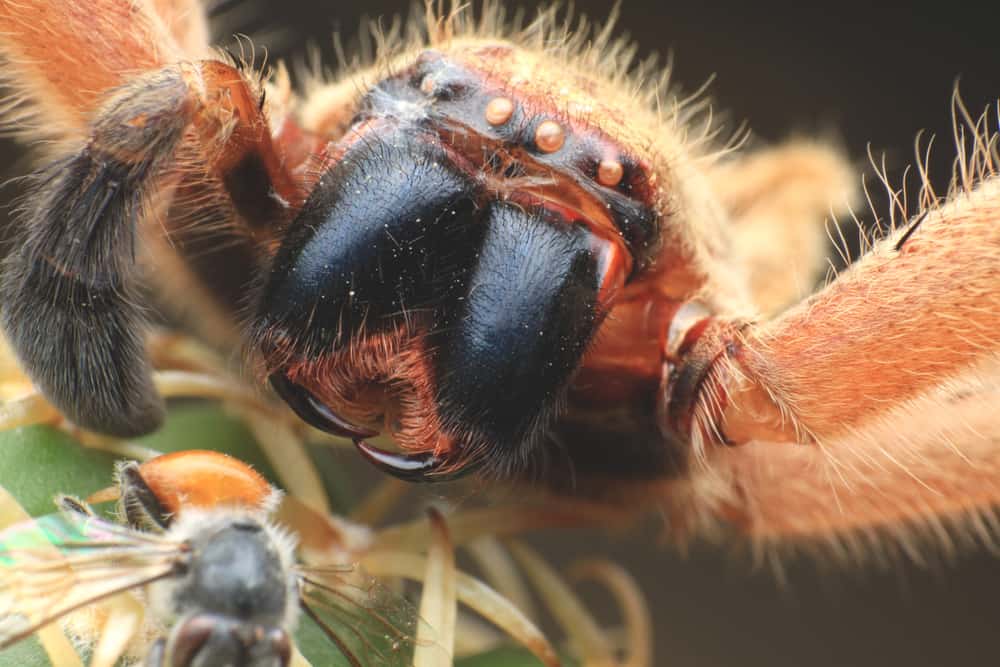
Carolina wolf spiders are feared because of their behavior and appearance.
©Piboon Suwankosai/Shutterstock.com
Carolina wolf spiders are feared because of their behavior and appearance. However, their venom paralyzes their prey, so they rarely bite. They also have fangs that squeeze venom into their prey to paralyze it. Despite their hunting behavior, they are not a threat to humans. A wolf spider bite might be painful and cause swelling within the bite area, and people sometimes associate it with a bee or wasp sting.
Where can Carolina wolf spiders be found?
It is mentioned that Carolina wolf spiders, like most wolf spiders, don’t build webs. Instead, they move fast to hunt down their prey, like flies and other small insects. They are used to burrowing inside leaves and around the ground as they venture out to hunt for their next prey at night.
If you are scared of these Carolina wolf spiders, just know that they mostly tend to avoid humans. However, they can still live in places within your home, such as the garage, the basement, or an old closet that is rarely used to protect themselves from cold weather. Despite this, they are weather tolerant and can live in all sorts of habitats with temperature differences due to their ability to regulate their body temperature according to the weather. Luckily, these giant spiders are not a threat and are harmless as they are also an essential part of the ecosystem.
What do Carolina wolf spiders eat?
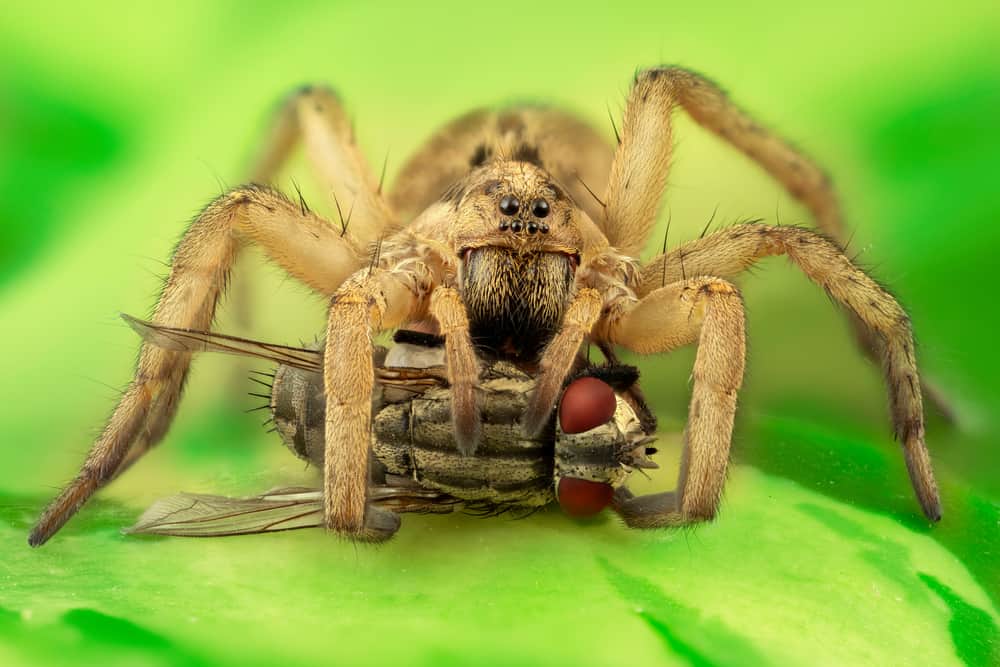
Carolina wolf spiders usually eat insects and other small invertebrates.
©Vida Shams/Shutterstock.com
Carolina wolf spiders usually eat insects and other small invertebrates. They typically feed on grasshoppers and crickets. They would sometimes inhabit areas within human homes to feed on pests such as cockroaches and houseflies, making them an essential part of the ecosystem as well as in people’s homes to prevent the spread of pesky and harmful insects.
What do Carolina wolf spiders look like?
Like most spiders, Carolina wolf spiders are feared for their appearance as they have a larger body than any other species of wolf spider. They are sometimes mistaken for tarantulas as they can also get hairy. However, females are bigger than males. One interesting fact about these giant spiders is their eyes. Carolina wolf spiders’ eyes reflect light, which can glow like cats’ eyes at night.
Do Carolina wolf spiders make good pets?
Despite their appearance and hunting behavior, Carolina wolf spiders can be kept as pets by exotic pet keepers who want a low-maintenance, adorable, and docile spider pet. In addition to being low-maintenance, they cost less than other pets. You also don’t have to spend much money on your pet Carolina wolf spider, as they only require a minimum amount of food and water in an optimal environment. Once you’ve given them all these, nothing else needs to be bought or added.
For you to be able to make an artificial habitat for your pet Carolina wolf spider, a two-gallon terrarium with a homemade substrate of pebbles, leaves, and twigs is enough for it to burrow under. They also prefer to live in the dark, so they must be put in a habitat with little to no light.
Carolina wolf spiders that are kept as pets are fed with the same insects that they hunt in the wild, such as grasshoppers, flies, moths, mosquitos, worms, or even cockroaches. They should also be fed twice a day and mostly left alone as they are solitary creatures, meaning they don’t like a little company by their side for too long. If you are trying to pick up your pet wolf spider, expect to get bitten as they are not used to human contact.
What are the other wolf spiders in North Carolina?
Other than the biggest wolf spider, the Carolina wolf spider, other wolf spider species are making North Carolina their home. Just like the Carolina wolf spider, all of these wolf spiders share the same characteristics and traits, although they are also unique in their ways.
1. Rabid Wolf Spiders
No, they do not carry rabies, but their name is derived from their erratic and seemingly crazed behavior. Like the typical wolf spider, they do not spin webs to hunt but instead chase their prey down. They are more aggressive and fast than any other wolf spider, which is why they gained the name “rabid.” Unlike Carolina wolf spiders, which are usually darker in color, the Rabid wolf spiders are light brown.
2. Bold Jumping Spider
As their name suggests, they are indeed literal jumping spiders. Although they are classified as jumping spiders, they have the same hunting behavior as wolf spiders and are sometimes associated with them. Bold Jumping Spiders have large, forward-facing eyes with an excellent vision that they use to stalk and hunt prey down by jumping on them.
3. Shore Spider
It is called the Pardosa milvina, commonly known as the Shore Spider. It is a wolf spider mainly found near rivers and agricultural areas. They also feed on a large variety of insects and other spiders. They are the smaller wolf spider species, in which females are only 6.2 millimeters, and males are only 4.7 millimeters in length.
The photo featured at the top of this post is © iStock.com/JAH
Thank you for reading! Have some feedback for us? Contact the AZ Animals editorial team.



